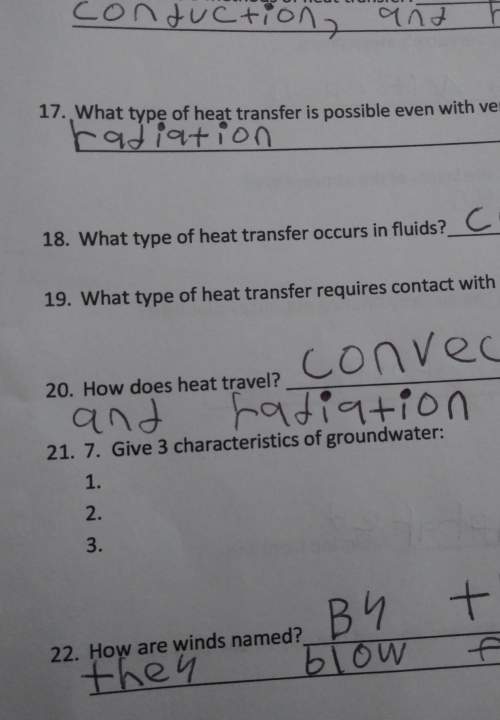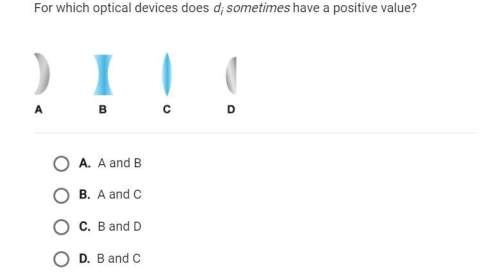
Physics, 17.07.2019 19:30 benjaminmccutch
4: which of the following is true of an object in a circular motion at a constant speed? a: the net force on the object is zero b: the object is not accelerating as the speed of the object remains the same c: the object is accelerating as the direction of the object is changing d: the object is accelerating as the velocity remains the same could it be c

Answers: 1


Another question on Physics

Physics, 21.06.2019 15:00
Does this organism still meet the definition of a eukaryote ? why or why not?
Answers: 2

Physics, 22.06.2019 01:40
In all trials, the magnitude of the final velocity for g1 + g2 was less than the magnitude of any initial velocity. as mass increased, what happened to the velocity? the velocity decreased. the velocity increased. the velocity of g1 + g2 could not be measured. the velocity was not affected by the mass increase.
Answers: 1

Physics, 22.06.2019 02:00
Chapter 23, problem 075 the figure shows a geiger counter, a device used to detect ionizing radiation (radiation that causes ionization of atoms). the counter consists of a thin, positively charged central wire surrounded by a concentric, circular, conducting cylindrical shell with an equal negative charge. thus, a strong radial electric field is set up inside the shell. the shell contains a low-pressure inert gas. a particle of radiation entering the device through the shell wall ionizes a few of the gas atoms. the resulting free electrons (e) are drawn to the positive wire. however, the electric field is so intense that, between collisions with gas atoms, the free electrons gain energy sufficient to ionize these atoms also. more free electrons are thereby created, and the process is repeated until the electrons reach the wire. the resulting "avalanche" of electrons is collected by the wire, generating a signal that is used to record the passage of the original particle of radiation. suppose the radius of the central wire is 24 âµm, the inner radius of the shell 2.3 cm, and the length of the shell 14 cm. if the electric field at the shell's inner wall is 2.8 ă— 104 n/c, what is the total positive charge on the central wire?
Answers: 1

Physics, 22.06.2019 11:30
Which of the following is the phase that results when the moon is on the opposite side of the earth from the sun? a. quarter moon b. crescent moon c. new moon d. full moon
Answers: 1
You know the right answer?
4: which of the following is true of an object in a circular motion at a constant speed? a: the...
Questions

Spanish, 25.02.2021 04:50

Mathematics, 25.02.2021 04:50

Mathematics, 25.02.2021 04:50

Biology, 25.02.2021 04:50


Biology, 25.02.2021 04:50

Computers and Technology, 25.02.2021 04:50






Mathematics, 25.02.2021 04:50

Mathematics, 25.02.2021 04:50

Mathematics, 25.02.2021 04:50


Chemistry, 25.02.2021 04:50


Mathematics, 25.02.2021 04:50

Mathematics, 25.02.2021 04:50





